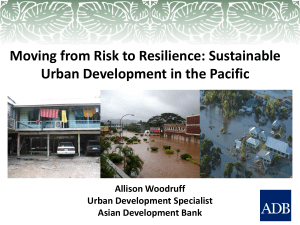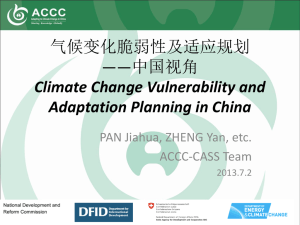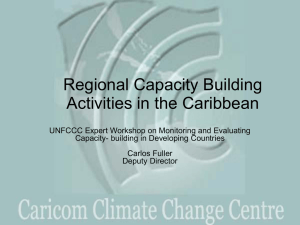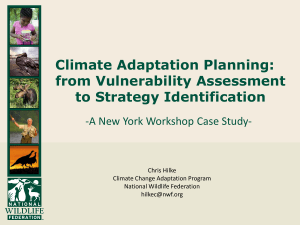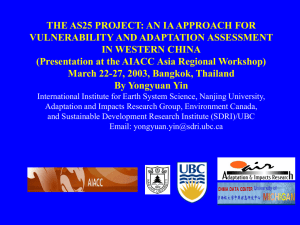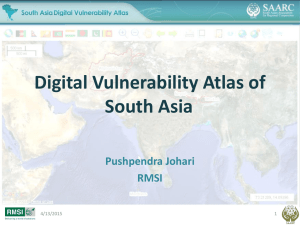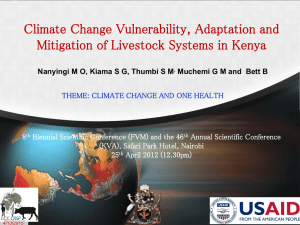Wolf et al. Barriers to adaptation
advertisement
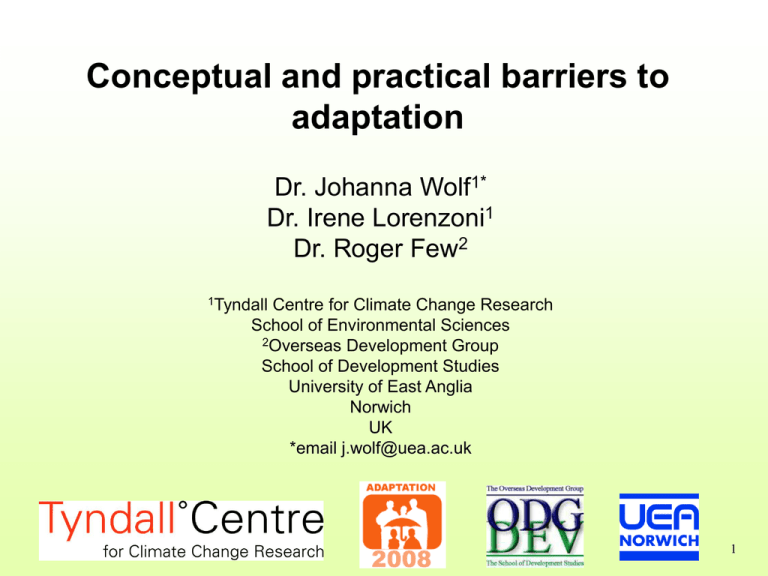
Conceptual and practical barriers to adaptation Dr. Johanna Wolf1* Dr. Irene Lorenzoni1 Dr. Roger Few2 1Tyndall Centre for Climate Change Research School of Environmental Sciences 2Overseas Development Group School of Development Studies University of East Anglia Norwich UK *email j.wolf@uea.ac.uk 1 Perceptions of vulnerability to heat wave effects • Objective – To explore how perceptions of vulnerability affect adaptation actions among vulnerable population – To explore barriers to adaptation arising from such perceptions • Methods – Interviews with elderly people age 75+ and ‘carers’ in summer 2007 • 57 interviews in Norwich, 44 in London • Stratified by IMD1-2 (bottom end) and IMD4-5 (top end of socio-economic spectrum) – Qualitative analysis of interview data using grounded theory 2 Analysis • Individuals’ perceptions of vulnerability to effects of heat waves • How perceptions may shape actions to reduce vulnerability • Types of adjustments evident – reactive vs. anticipatory adaptation – short term vs. long-term adaptation – implications for adaptive capacity 3 Many elderly do not perceive themselves as vulnerable • Do not perceive themselves as elderly • Do not acknowledge heat as a threat • Identify factors which contribute to vulnerability, but do not perceive themselves as vulnerable • Do not associate health effects of heat with themselves Reproduces “not me-not here” perceptions of climate impacts Barrier to adaptation 4 High vs. low self-efficacy High self efficacy: • Feel independent and able to manage without help • May refuse help offered • Overestimate capacity to adjust Perpetuate vulnerability Unlikely to adjust Low self efficacy: • Unable to take action – Nothing can be done – Not sure what to do • Distance from issue Contributes to vulnerability Reduces ability to adapt 5 Social networks do not necessarily reduce vulnerability • Carers may not perceive cared-for to be at risk, despite identifying the elderly as more vulnerable • Carers’ awareness of health effects of heat and coping strategies often very limited • Unaware of how medical conditions can further exacerbate vulnerability Rely on poor advice or cope without effective help Leads to ‘hidden’ vulnerability Barrier to adaptation 6 Responses constitute reactive adaptation • Primarily reactive responses to heat stress • Very few cases of anticipatory responses • Almost no long-term adjustments Proactive, long term adaptation does not readily happen Raises questions about adaptive capacity of this population group 7 In combination, these results imply… Barriers to adaptation exist at the level of individuals • Conceptual: emerge from perceptions of self, concepts of aging, vulnerability, ability to foresee outcomes • Practical: social interactions may exacerbate vulnerability Heat as a non-issue, high/low self efficacy, social networks, and evidence of ongoing reactive adjustments together suggest anticipatory, long-term adaptation is unlikely 8 Thank you Comments or questions? Email me at j.wolf@uea.ac.uk 9

